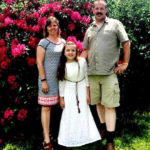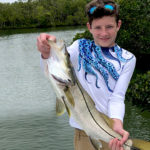Foot deformity and amputation: Maria’s tough choice
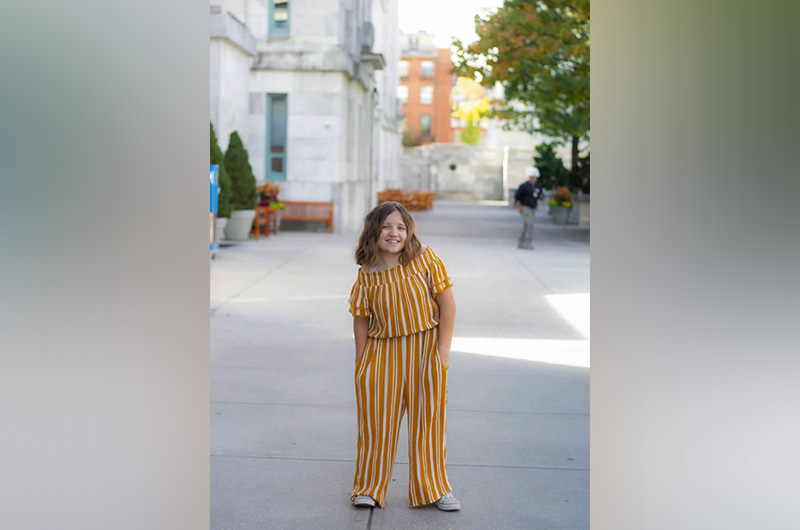
Whenever she could, Maria Dupuis found a way to walk. She walked when she had to wear a cast from her chest to her ankles. She walked when the curve in her spine reached 94 degrees. When her right foot pointed up to the sky rather than straight ahead, she walked on her heel.
Maria was born with amniotic band syndrome. While her mother was pregnant, the amniotic sac ruptured and strands of torn tissue wrapped around Maria’s foot, leg, and other parts of her body. In addition to hip dysplasia, leg-length discrepancy, congenital scoliosis, and several other physical differences, she was born with severe functionless clubfoot.
“The bands had pulled her leg to the side and pulled her foot up at an angle,” explains her mother, Leah. Typically, clubfoot is treated with stretching, casting, and bracing. But no matter what doctors did to correct Maria’s right foot, it always returned to its upward-pointing position.
Adding to the challenges, her right hip was chronically dislocated and her right leg grew at a slower pace than her left. As she got older, her legs became increasingly different in length. In addition to scoliosis that caused her to lean to the right, the difference in her legs put increasing strain on her spine. Hoping to alleviate this pressure, Maria’s spine surgeon, Dr. John Emans, referred her to Dr. James Kasser of the Lower Extremity Program.
An unwelcome recommendation
Maria was in second grade when Dr. Kasser first raised the possibility of amputating her right foot. A prosthetic foot and ankle, he told the family, could make up for the difference in the length of her legs and help her stand more upright. And it would be easier her for her to walk with the prosthetic if her foot were amputated. He was the second doctor to recommend this course of action. Maria remembered when a doctor in New Hampshire mentioned the possibility, she brushed it off as ridiculous. “When Dr. Kasser said maybe I should have an amputation, I just wanted to cry.”
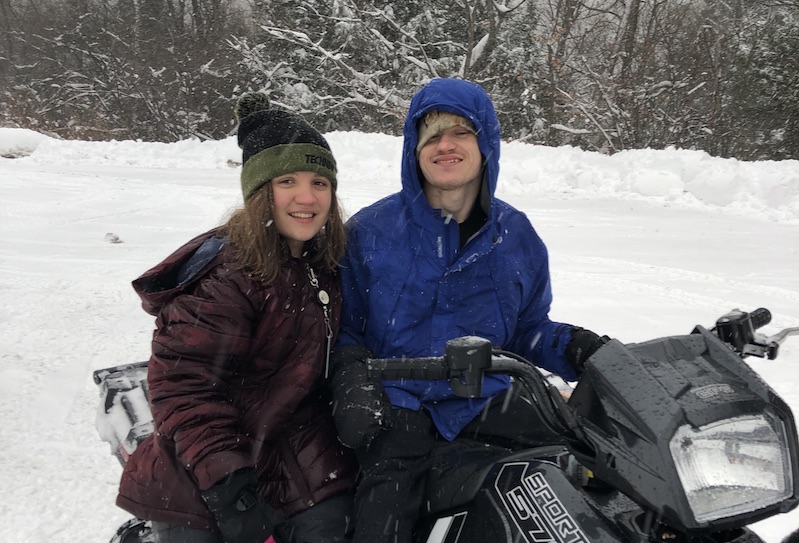
Later that evening, Maria turned on her mother, demanding to know why she wanted to change the way God made her. Leah was speechless. She and Maria’s father, Keith, had done everything they could to be sure their daughter accepted herself just as she was. “At that point, we decided that we had always made the decisions for Maria about what surgeries she would have and when. But we agreed that she would decide whether to have the amputation.”
Ignoring Dr. Kasser
Although it would be years before Maria forgave him, the family continued to meet with Dr. Kasser. “Anytime he walked into the room, she would pick up a book and pretend he wasn’t there” says Leah. “But he just kept trying to connect with her.”
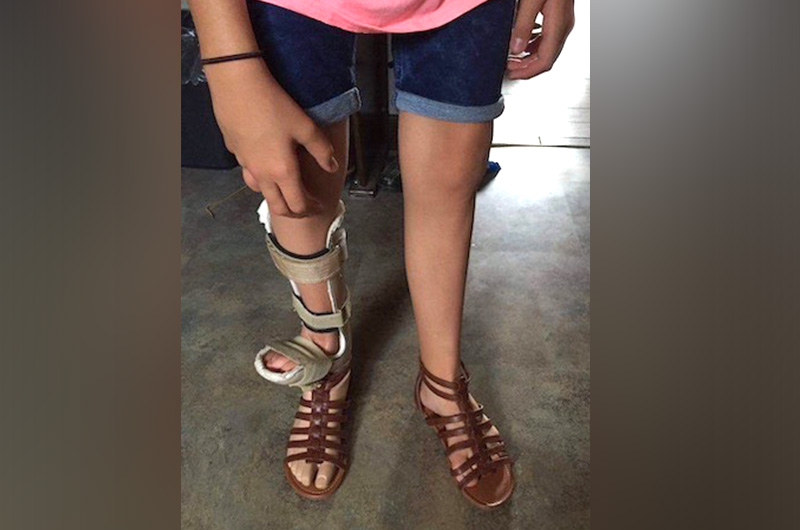
In 2014, Dr. Kasser performed a femoral osteotomy on Maria’s right thighbone so it would fit into her hip socket. In 2016, with his help, she got a special prosthesis that allowed her to keep her foot and walk on her heel. With the prosthesis, her legs were finally the same length, but the setup was far from perfect. The pressure on her heel made walking painful. And her natural foot hovered several inches above the ground, giving her the appearance of having two feet. It was hard to find pants wide enough to fit over her foot. When she wore shorts, people stared.
Reconsidering amputation
Dr. Kasser again raised the subject of amputation in 2016, six years after he first mentioned it. By then, Maria had warmed up to him enough to listen. “He took my hand like we were the only two people in the room,” says Maria. “He told me, ‘Maria, I seriously think an amputation would be good for you. I’m not going to force you but I think you should consider it.’” Her limp was growing worse. If things continued on this path, Dr. Kasser feared, she might not be able to walk at all in a few years.
Without her parents knowing it, Maria took the suggestion to heart. At home, she prayed and cried over the decision and its finality. What if she regretted it later? But her foot made it difficult to walk and do so many other things. She thought about her neighbor, a mother of four, who’d lost her leg in an accident at a young age. “I realized that having an amputation and being able to get a better fitting prosthetic would help my life a lot.”
Maria’s decision took Leah and Keith by surprise. They’d stood by their word and let her make the decisions about her surgeries, and had no idea she had been silently weighing the possibility of amputation. “When she came to us, I just about choked,” says Leah.
Lead up to surgery
As Maria’s surgery drew near, Leah kept friends and family up to date with an online journal.
Journal entry, July 17, 2017
Maria had appointments today with both of her surgeons. With Dr. Kasser, her leg and foot surgeon, we discussed what type of amputation would be best. He will be discussing this further with her prosthetist, but he was leaning toward saving her heel and amputating the rest of her foot to keep her heel weight bearing.
Journal entry, March 27, 2018
This surgery is a big one for her. It has taken her 8 years to come to this point and has not been easy by any means. She was in second grade when the amputation was proposed, and she was horrified and livid with us. She wouldn’t speak to or look at the surgeon for years because of this. When we got home from the appointment, she turned to me and said, “Why? Why would you ever change the way God made me?
Post-amputation and no regrets
Maria had the amputation in March 2018, near the end of her sophomore year. In the end, Dr. Kasser removed only the front of her foot. He folded a flap of skin and tissue from the bottom of her foot over the surgical site to form a soft envelope around her limb. For the next several months, she wore a shrinker sock on her surgical site to make the swelling go down.
It has been a year and a half since the surgery. Maria’s foot and ankle fit inside the socket of her prosthesis. When she walks, her weight is spread out over a greater area, relieving the pressure on her heel. She and her prosthetist continue to adjust her new foot to enable her to walk with as much ease as possible. In the meantime, she has listened to Dr. Kasser’s advice to be as active as she wants to be.
“Being post-amputation, I haven’t really ever regretted my decision,” she says. “There’s been a lot of pain, but I really think it has helped me. I have much more endurance than I had before.” She describes how she broke her prosthesis with a hint of pride in her voice. “I smashed the foot in half while I was snowboarding. So, we (she and her prosthetist) are learning how strong my prosthesis needs to be.”

Read about Maria’s spine surgery and learn more about the Lower Extremity Program.
Related Posts :
-

Congenital scoliosis: Maria’s story
Growing up in a big family helped. When Maria Dupuis came home from the hospital after surgery to correct her ...
-

One family, two very different clubfoot experiences
Theresah Boateng and her daughter Eno Agyapomaa Agyemang both have strong wills and outgoing personalities. Both were born with a ...
-

Generations of excellence in lower extremity care: Dr. Kasser and Dr. May
As an orthopedic surgeon and professor of surgery, Dr. James Kasser has spent several decades sharing his expertise in limb ...
-

New hope for Caden's leg after accident
By the time he was 12, Caden had spent almost half his life struggling to keep up with his peers. When ...


